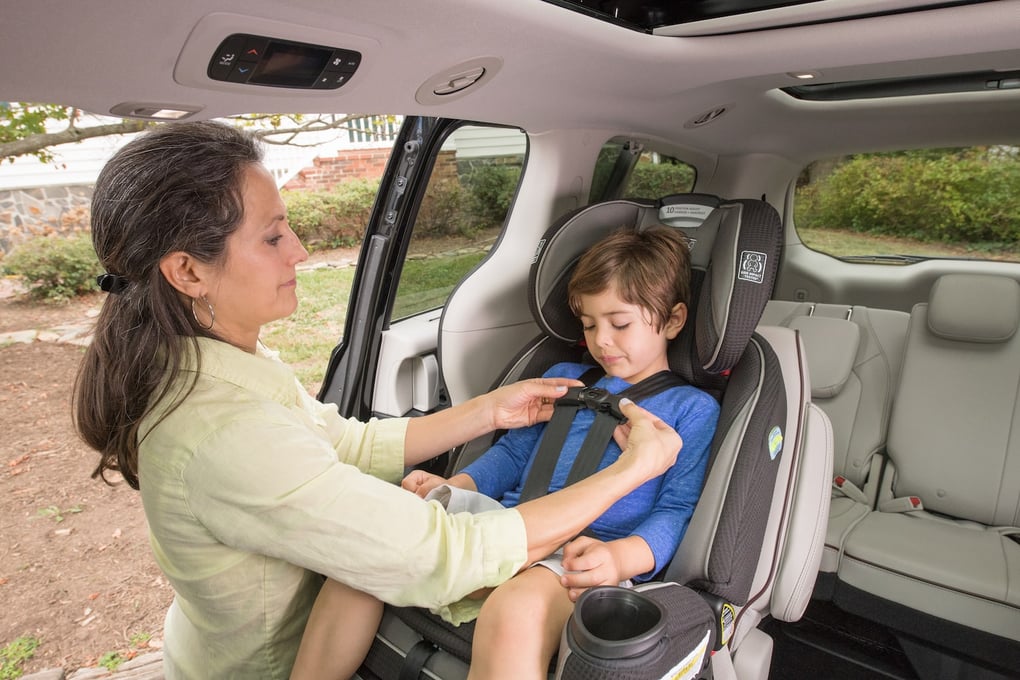I have talked on the CarPro Show a lot about the dangers of leaving children in hot cars, but haven’t broached the subject of child safety seats lately. Since National Child Passenger Safety Week is coming up in September, which includes National Seat Check Saturday on Saturday September 24th, 2022, it's a great time to do so. As I researched the subject, I learned that not only are there a wide variety of child seats available, but many child seats are not properly installed. It is also important to understand that as your child grows, he or she will require larger and different kinds of child seats.
In addition to the tips below, you can also find more information on the NHTSA's "Find the Right Seat" website where you'll find additional tools to help find the best seat for your child.
3 Basic Types Of Child Seats
1.) Rear-facing seats

These seats fall into three categories:
- Infant Seats: As the name suggests, infant seats are intended for newborns and small babies. This is a small portable seat that can only be used facing the rear. Most children outgrow these seats by the time the child reaches nine months to a year.
- Convertible seats: These seats are adaptable to change from rear-facing to front-facing. These seats can be used much longer as the child grows. When you transition from rear-facing to front, you'll need to use a harness and tether, which usually come with convertible seats.
- All-in-one seats: This seat can change from a rear-facing seat to a forward-facing seat, again with a harness and tether and to a booster seat as a child grows. Because it can be used with children of various sizes, it allows for children to stay in the rear-facing position longer.
2). Forward-facing seats

These also fall into three categories. Like rear-facing seats, they also come in a convertible seat and an all-in-one seat. Forward-facing seats also come as a combination seat. Combination seats transform from forward-facing with a harness or tether into a booster seat.
3). Booster seats

There are four categories of these seats. These also come in combination seats and all-in-one seat, but also come in two other forms:
- Booster seat with high back: These boost the child's height to enable the seat belt to fit properly. It provides neck and head support. This is helpful if your vehicle doesn't have headrests or high back seats.
- Backless booster seat: This seat is also designed to raise the child's height, but does not help with back or neck support and should only be used if you have headrests.
When To Change Seats
- A newborn should be in a rear-facing seat from the time of birth and depending on his or her size, you want to keep rear-facing as long as possible, even through the age of three or four as long as they still fit.
- 4-7-year-old boys and girls should be in a forward-facing car seat with a harness and tether until they reach the top height or weight limit allowed by the car seat;s manufacturer.
- 8-year old children and older should be in a booster seat, depending on their size and the booster seat limits. Most children are out of a booster seat before the age of 12.
- Once the child outgrows the booster seat, he or she is ready for just using the vehicle's seat belts. Be sure the lap belt lies snugly across the upper thighs, not the stomach. The shoulder belt should lie snugly across the shoulder and chest and not cross the neck or face. Remember: your child should still ride in the back seat because it is safer there.
Seat Registration And Compliance
It is important to register the car seat you purchase. This will allow the manufacturer of the car seat to contact you if there is a safety defect found, and this happens a lot more than most think. You can register your car seat at the National Highway Traffic Safety Administration's website, www.safercar.gov.
There is also a card that comes with the child seat that you can mail-in to make sure you are notified if a safety issue is discovered.
NHTSA Ease-Of-Use Ratings
The NHTSA provides ease-of-use ratings based on the following criteria:
- Evaluation of Instructions: Examines the content and clarity of the instructions manual for the child restraint.
- Vehicle Installation Features: Examines the ease of using features that pertain to installing the child restraint in a vehicle.
- Evaluation of Labels: Examines the content and clarity of the labeling attached to the child restraint.
- Securing the Child: Examines the ease of using features that pertain to securing a child correctly in the restraint.
When shopping for a new child seat, look for the ease-of-use rating system, which is broken down like this:
- 5 Stars = Excellent features on this child restraint for this category.
- 4 Stars = Above-average features on this child restraint for this category.
- 3 Stars = Average features on this child restraint for this category.
- 2 Stars = Below-average features on this child restraint for this category.
- 1 Star = Poor features on this child restraint for this category.
- N/A = Does not contain any features that require a rating.
Proper Installation Is Critical
This is where most parents fail to properly protect their children. Nearly half of all child seats are installed incorrectly. Follow these tips:
- Carefully read the owner's manual of your vehicle as well as instructions from the child seat manufacturer. You will either use a tether or the center backseat seat belt. If it is possible to use the tether system, it is more secure. Never install a child seat in the front seat.
- Once secure, the child seat should not move more than one inch side-to-side or front-to-back.
If you are not 100% sure that the child seat is installed properly, don't wait for an accident to find out. Many car dealerships will assist you and have experts on staff. Some firefighters, police officers, and nurses have been certified as experts in child seat installation and will do this service for free. Usually, a google search will tell you, or you can contact www.saferide4kids.com or use the NHTSA's Car Seat Inspection Finder. Those are two resources that will help you find a professional in your area.


